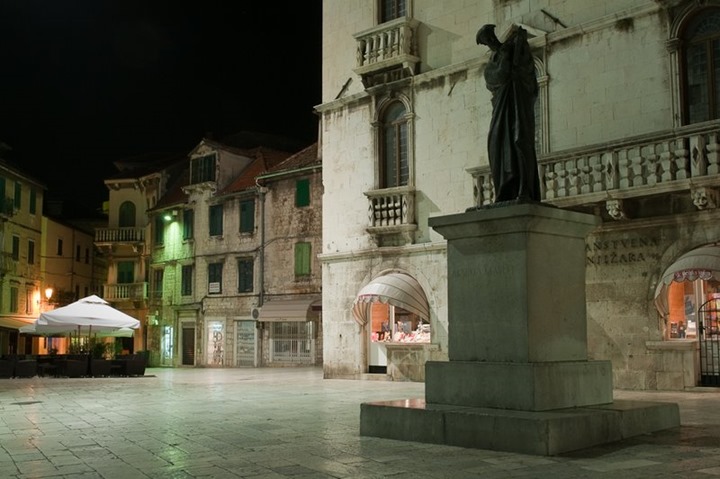
One of the most impressive sites along the Dalmatian coast is Diocletian’s Palace within the city of Split, Croatia. The Palace actually constitutes much of the old town of Split. Built between the 3rd and 4th century AD by the Roman emperor Diocletian near the city of Salona (the Roman capital of the province of Dalmatia). The Emperor, born in the vicinity, chose this location for that reason. He spent his last years in the expansive palace and is buried here as well. He may have even committed suicide in the Palace as well.

It wasn’t until the 7th century when this area, long abandoned now by the Romans, saw locals occupying the palace walls. It is believed they had fled here to escape the invading Slavs. Through the years, locals established homes and businesses within the walls and it came to life as more than just a palace for an emperor, but instead as the center of commerce and life in the city. Even today it follows this role that it has had for so many centuries.

The Palace and the surrounding region became a World Heritage site in 1979 and the people of the region have successful avoided development even as recent as 2006 when some development had been approved in the city (but the local residents were able to protest and stop it). The palace is very impressive both for its size, history, and its level of preservation. Even given all the following centuries, it managed to survive very well and integrate into a living part of the city. It is the most valuable example of surviving Roman architecture on the Adriatic and one of the most famous cultural and architectural buildings on the Dalmatian coast.

Visiting
The most amazing part of Diocletian’s palace is that it is not simply just a tourist site but the living center of the city of Split. You will see people living, work, shopping, and generally going about there day within the old palace walls. It is even possible to stay within the walls of the old city such as when I did at Hotel Kastel which I can highly recommend being one of my favorite hotels of my travels in the Balkans.
Getting There
Split is easily reached by bus from Zagreb, Dubrovnik, or many other Croatian cities. There is regular bus service to Dubrovnik (how I reached there), and given that it is one of the major cities in the region it is not a difficult site to reach. From there several other towns and cities are easily reached including the city of Trogir (UNESCO WHS), The Cathedral of St James in Šibenik (UNESCO WHS), and Krka National Park (not a UNESCO site, but similar to Plitvice if you can’t make it there).

Leave a Reply